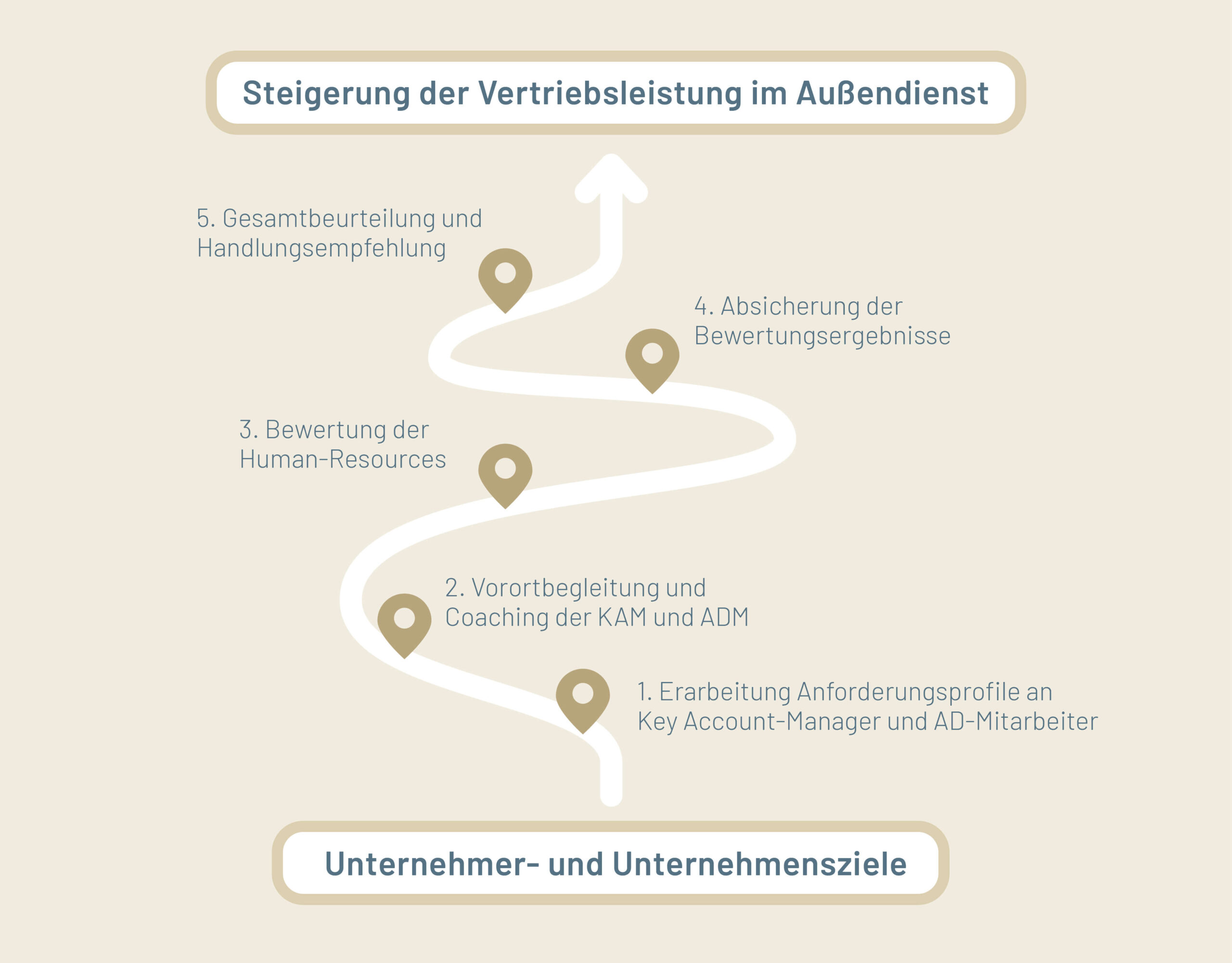Case Study # Sales Management
Boosting Sales Team Performance – Identifying and Developing Talent
Initial situation
A family-owned automotive supplier, with 5,600 employees and €2.5 billion in revenue, operates worldwide across several divisions. The division that engaged us generates approximately €600 million in global aftermarket sales. As an automotive hub, Germany is the most important retrofit market in the passenger car segment.
Background/Objectives:
For many years, the company had sold its products through sales representatives. These representatives were a small number of selected wholesalers who were assigned the sales function for specific territories.
Over time, however, a strong consolidation process took place among wholesalers of automotive parts and workshop supplies. Larger and larger dealer groups emerged, increasingly unwilling to accept another wholesaler acting as a manufacturer’s sales representative in their territory. The same applied to the OES organizations of the automotive brands.
Against this backdrop, the company terminated all sales representative contracts and switched to direct sales at the turn of the year. For the company, it was critical that the new team became effective in and towards the market as quickly as possible. “Startup problems” had to be minimized. In addition, an early differentiation between “high performers and underperformers” was required during the probation period, along with the identification of top-performing field sales employees.
The objective was to determine to what extent the expectations and requirements of the company were being met by each field sales employee and, if necessary, to identify the need for further qualification of the new sales staff.
Implementation:
Together with the responsible managing director and the division sales director, the key performance criteria that employees in these roles must meet were defined. These criteria were weighted according to strategic importance, and the required levels of achievement for assessment and measurement were specified.
This was followed by a 2-day field accompaniment of the individual sales representatives, including joint customer visits to wholesalers, car repair shops, and dealerships. From this, an evaluation of human resources was derived based on the sales representatives’ behavior and approaches with customers. This evaluation was then verified through a second round of customer visits—this time unannounced.
Ultimately, a comprehensive assessment was made, along with corresponding recommendations for action.
Results:
The results showed that the company had, for the most part, good people on its team. Three individuals stood out with excellent results, while for one person we recommended a change of responsibilities. For four others, we suggested specific measures for further qualification.
In its first year of operation, the new team was able to increase sales by 14.8% compared to the previous year.



